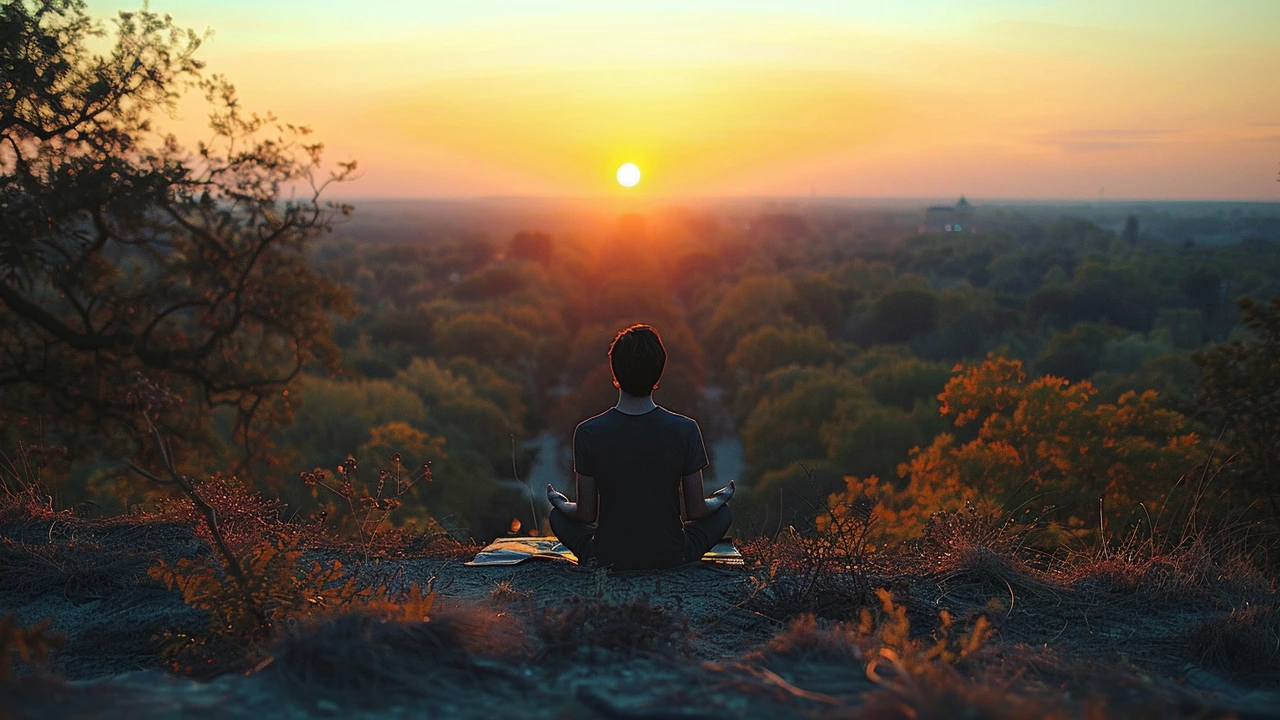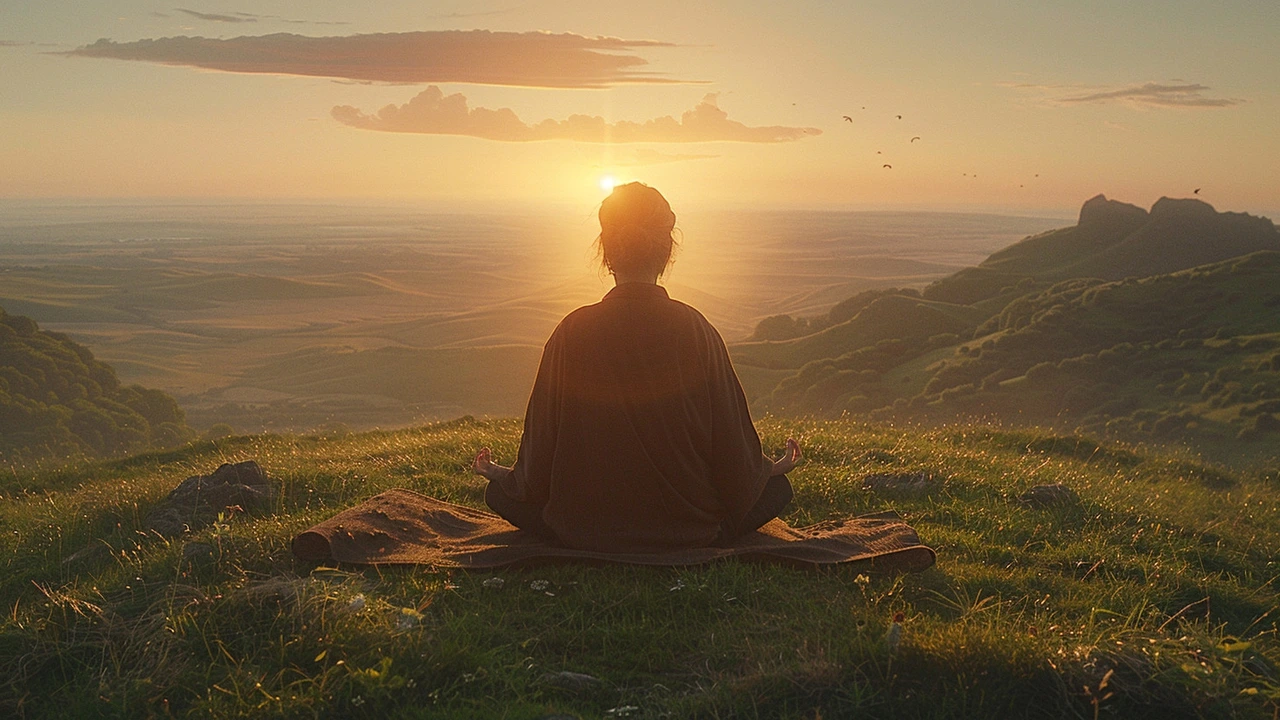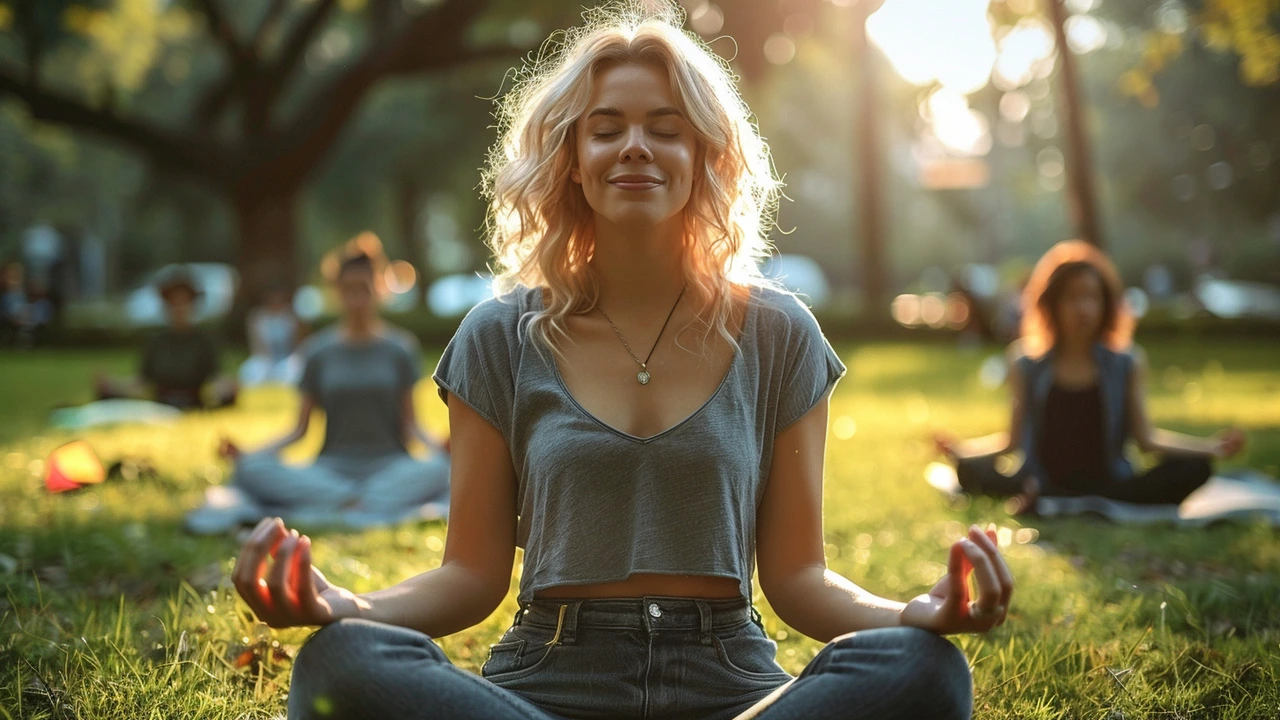
Meditation has been practiced for thousands of years, offering a path to inner peace and mental clarity. With numerous techniques out there, it can be challenging to find the one that suits you best. Whether you're just starting or looking to deepen your practice, understanding different approaches can be incredibly beneficial.
In this article, we'll explore various meditation techniques, each unique in its method and benefits. From paying attention to your breath to immersing yourself in guided visualizations, you’ll discover ways to bring tranquility into your daily life. Ready to embark on a journey of mindfulness and relaxation? Let’s dive in and learn how to master meditation.
- Introduction to Meditation
- Mindfulness Meditation
- Transcendental Meditation
- Guided Visualization
- Movement Meditation
- Tips for Successful Practice
Introduction to Meditation
Meditation is an ancient practice with roots tracing back to India, China, and other Eastern countries over 5,000 years ago. It has evolved in various forms and traditions, ranging from religious to secular practices. The core idea revolves around achieving a state of mental clarity and emotional calm, a sanctuary from the hustle and bustle of daily life.
One of the primary misconceptions about meditation is that it requires extensive training or a spiritual background. In reality, starting with simple techniques can be incredibly effective. For instance, focusing on your breath for a few minutes can set the stage for more advanced practices in the future. Studies have shown that even brief meditation sessions can reduce stress and improve focus, highlighting the accessibility and benefits of this practice.
Historically, meditation was often linked with various religious rituals. For example, Buddhist monks use specific forms of meditation as part of their spiritual journey. Today, meditation is recognized not just for its spiritual benefits but also for its potential psychological and physical benefits. Experts from Harvard Medical School have found that regular meditation can positively impact the brain’s structure by increasing gray matter in areas associated with memory, learning, and emotional regulation.
People often seek meditation to cope with the overwhelming demands of life. From work pressures to personal issues, finding a moment of peace can be incredibly healing. Successful meditation isn't about emptying the mind completely but rather learning to observe your thoughts without judgment, creating a space for tranquility. As meditation expert Jon Kabat-Zinn puts it, "You can't stop the waves, but you can learn to surf."
The variety of meditation methods available means there's something for everyone. Whether you have five minutes or an hour, there's a technique suited to your lifestyle and needs. In this article, we will explore different forms of meditation, providing tools to help you incorporate these practices into your daily routine for enhanced well-being.
Mindfulness Meditation
Mindfulness meditation is a powerful technique that encourages living in the present moment with full awareness. Originating from Buddhist teachings, it has become widely popular in the West and is integrated into various health and wellness programs. The practice involves observing thoughts, feelings, and sensations without judgment. This helps in cultivating a sense of peace and reduces stress.
One of the key aspects of mindfulness meditation is focusing on the breath. By tuning into the natural rhythm of your breath, you anchor your mind to the present moment. This is particularly useful for those who find their minds frequently wandering. Sitting comfortably and closing your eyes, you can start by taking deep breaths, then gradually shift to normal breathing, observing each inhale and exhale.
Scientific studies have shown that mindfulness meditation can lead to significant changes in the brain. For instance, a study by Harvard researchers found that an eight-week mindfulness meditation program can change the brain structure. The study observed thickening in the hippocampus, which is important for learning and memory, and shrinking of the amygdala, associated with stress and anxiety.
It's not just about sitting still. There are various forms of mindfulness meditation, including walking meditation. This involves paying attention to the movement of your legs and feet, each step, and the sensations they create. Walking meditation can be practiced anywhere, making it a versatile option for integrating mindfulness into your daily routine.
As Jon Kabat-Zinn, the creator of the Mindfulness-Based Stress Reduction program, puts it: "Mindfulness means paying attention in a particular way: on purpose, in the present moment, and non-judgmentally." This quote captures the essence of mindfulness meditation and its transformative potential.
Learning to meditate mindfully can take time. It helps to start with short sessions, maybe five to ten minutes, and gradually increase the duration as you become more comfortable. Many people find it helpful to join a group or take a class to receive guidance and support.
The benefits of mindfulness meditation extend beyond mental well-being. It can also positively impact physical health. Regular practice has been linked to lower blood pressure, improved sleep, and enhanced immune function. It's a holistic approach to health that nurtures the mind and body.
Practicing mindfulness meditation regularly can also improve concentration and attention span. This is particularly beneficial in our fast-paced world where distractions are plenty. By training the mind to stay focused, individuals often find themselves more productive and less prone to procrastination.
To sum up, integrating mindfulness meditation into your life can be a game-changer. It's about turning inward, acknowledging the present moment, and finding peace amidst chaos. Whether you start your day with a brief session or incorporate mindful moments throughout your day, the benefits are profound and far-reaching.

Transcendental Meditation
Transcendental Meditation, often abbreviated as TM, is one of the most widely practiced and researched forms of meditation around the world. Developed by Maharishi Mahesh Yogi in the mid-20th century, TM involves the use of a specific mantra—a word or sound repeated silently—to aid in the quest for inner peace and relaxation. It is typically practiced for 20 minutes twice a day while sitting comfortably with closed eyes, making it a very approachable technique.
This form of meditation distinguishes itself with its simplicity and accessibility. Almost anyone can learn how to practice it, and it doesn't require any specific beliefs, spiritual or religious. Instead, it focuses on the personal experience of the practitioner. Through regular practice, individuals often report a wide range of benefits, including reduced stress, improved concentration, and even enhanced creativity. In fact, several scientific studies have shown that TM can lead to significant improvement in mental health and cognitive function.
One of the remarkable aspects of TM is the support it receives from the medical community. The American Heart Association, for instance, recognizes the benefits of TM for heart health. A comprehensive study published in the Journal of the American College of Cardiology found that practicing TM can reduce the risk of heart attack and stroke by up to 48%. These aren’t just small, anecdotal improvements but significant, measurable benefits for health and well-being.
The simplicity of TM lies in its mantra technique. Unlike other forms of meditation that might require concentration or visualization, TM encourages a natural settling of the mind. This helps in reducing stress hormones, which can radically enhance a person’s overall sense of calm and well-being. Once trained by a certified instructor, the individual is empowered to practice this form of meditation independently. However, it's essential to note that the mantras used in TM are personalized and provided during the training session, ensuring they are suited specifically to the learner.
For many TM practitioners, the effects are profound and life-changing. They often describe a sense of deep inner peace and a connection to a larger sense of self and purpose. Actress Cameron Diaz, a known advocate for TM, has mentioned its positive impact on her daily life, stating, "Meditation completely changed my life. It's one of the best tools I have to keep me grounded."
If you're considering incorporating TM into your daily routine, it's worthwhile to seek out a certified TM instructor. This ensures you're getting the correct guidance and personalized mantra needed for effective practice. Over time, the benefits of regular practice can accumulate, contributing positively to almost every aspect of your life, from emotional balance to physical health.
Here’s a quick look at the potential benefits often associated with practicing Transcendental Meditation:
- Reduced levels of stress and anxiety
- Improved focus and cognitive functions
- Enhanced emotional resilience
- Increased creativity and problem-solving abilities
- Greater overall sense of well-being
Research and firsthand experiences continually support the efficacy of TM in fostering a healthier, more balanced way of living. Whether you're in the thick of a demanding career, balancing personal and professional life, or simply seeking a method to achieve inner harmony, TM may well be the technique that resonates with you.
Guided Visualization
Guided visualization, sometimes known as guided imagery, is a technique that can deeply enhance your meditation practice. This method uses descriptive language and mental imagery to lead you into a peaceful state of mind. Often, it involves listening to a recording or following verbal instructions from a guide who helps create a calming scene or scenario in your mind.
Imagine yourself on a serene beach, feeling the soft sand beneath your feet, hearing the gentle waves lapping against the shore, and breathing in the salty sea air. These vivid pictures are meant to help center your thoughts and usher in relaxation. Guided visualization is effective for people who struggle to focus during silent meditation, as the structured guidance keeps the mind from wandering.
One fascinating aspect of guided visualization is its ability to reduce stress and anxiety significantly. According to a study published in the American Journal of Clinical Hypnosis, patients who used guided imagery experienced a 50% reduction in pain symptoms and a 33% reduction in emotional distress. This demonstrates the profound impact that visualization can have on both our mental and physical health.
“The images we hold in our minds influence our beliefs and feelings, which can, in turn, affect our overall well-being. Guided imagery allows one to channel these feelings positively.” — Dr. Martin Rossman
Guided visualization isn't limited to stress relief; it can also enhance performance in various fields. Athletes, for example, often use visualization techniques to improve their performance. By picturing themselves successfully completing a task, they build confidence and muscle memory. This mental rehearsal can be a powerful tool not just in sports, but in any area where performance matters.
To start with guided visualization, find a comfortable and quiet space where you won't be disturbed. You might want to use headphones to listen to a guided session. There are countless resources available, from YouTube videos to smartphone apps, offering guided sessions of various lengths and themes. Choose one that resonates with you.
Consistency is key to seeing the benefits of guided visualization. Integrate it into your daily routine—perhaps as part of your morning ritual or before bedtime. By making it a habit, you can cultivate a more relaxed and focused mind over time. Remember to be patient with yourself; like any skill, it improves with practice.
If you’re new to guided visualization, begin with shorter sessions, around 5 to 10 minutes. Gradually increase the duration as you become more comfortable with the process. Don’t be afraid to try different guides and scenarios until you find the ones that work best for you.
Guided visualization is accessible to nearly everyone and offers a myriad of benefits. Whether you're seeking to reduce stress, improve your sleep, or boost your athletic performance, this technique can be a valuable addition to your toolbox. So, the next time you feel overwhelmed by the chaos of daily life, take a few moments to close your eyes, listen to a soothing voice, and let your imagination transport you to a place of peace and tranquility.

Movement Meditation
When you think of meditation, the image of someone sitting still, eyes closed, and deep in thought typically comes to mind. However, meditation isn't confined to stillness. Movement meditation offers an alternative, blending physical activity with mindfulness, which makes it perfect for people who find it difficult to sit still for long periods.
This type of meditation can take various forms, from gentle exercises like yoga and tai chi to everyday activities like walking or even dancing. The goal remains the same: to achieve a state of mindfulness by focusing on the body's movements and the sensations that come with them. Unlike static meditation, movement meditation lets your body be your guide, taking you on a journey of awareness through the physical realm.
Yoga, one of the most well-known forms of movement meditation, combines deliberate breathing with precise postures. It's more than just a physical workout; it's about harmonizing the body and mind. Many people find that the focus required to maintain balance and form helps them clear their minds, leaving little room for distracting thoughts.
Similarly, tai chi, often described as ‘meditation in motion,’ focuses on slow, deliberate movements. Originating from ancient China, this practice is part of traditional Chinese medicine. Performed correctly, tai chi can enhance physical coordination, flexibility, and mental clarity. It's an effective way to integrate meditative principles into daily life through controlled, flowing movements.
Even simple activities like walking can serve as a form of movement meditation. Known as mindful walking, this practice involves walking slowly and carefully, paying attention to each step and the sensations it brings. You can do this in a garden, a park, or even your backyard. The idea is to immerse yourself in the act of walking, appreciating the feeling of your feet touching and leaving the ground.
“In walking meditation, our steps are the most important thing. Our thinking and planning, our emotions come second. And we simply enjoy taking peaceful steps.” – Thich Nhat Hanh
Dancing, too, can be a form of movement meditation. Letting your body move freely to the rhythm of the music can bring about a state of flow, where you are completely absorbed in the moment. This isn't about performing perfect dance moves; it's about connecting with your inner self through unrestricted movement.
The beauty of movement meditation lies in its simplicity and accessibility. There's no need for special equipment or training. Anyone can engage in movement meditation, regardless of fitness level. It's an excellent way to incorporate mindfulness into your daily routine without feeling overwhelmed by the idea of sitting still for long periods.
To get started with movement meditation, choose an activity that you enjoy and feel comfortable doing. It could be as simple as taking a quiet walk through nature or spending a few minutes stretching in your living room. The key is to focus your attention on the movement itself, becoming aware of the physical sensations and how your body moves in space. Over time, you'll find that this practice can bring a sense of calm and clarity to your mind, just like traditional meditation.
Tips for Successful Practice
Embarking on a meditation journey is both rewarding and challenging. To reap the benefits of meditation, consistency, and a healthy approach are key. Here are some tips for a successful meditation practice that you can incorporate into your routine for optimal results.
First and foremost, create a dedicated space for your meditation sessions. It doesn’t have to be elaborate, but it should be a place where you feel calm and away from distractions. You might want to include elements like incense, candles, or soothing music to set the mood. The goal is to make your meditation spot a beacon of peace in your daily life.
Another important aspect is to set a regular schedule. Choose a time of day when you can meditate without interruptions. Morning meditation can set a positive tone for the day, while an evening session can help you unwind before sleep. The key is to make it a habitual part of your day. Start with short sessions of 5-10 minutes and gradually increase the duration as you become more comfortable.
Understanding your breathing techniques is crucial. Focused breathing can significantly enhance your meditation experience. One technique is the 4-7-8 method: inhale for 4 seconds, hold for 7, and exhale for 8 seconds. This helps calm the nervous system and promotes relaxation. Slow, deep breaths can anchor your attention and keep your mind from wandering.
Don’t overlook the importance of your posture. Whether you’re sitting on a chair, on the floor, or lying down, ensure that your posture supports a relaxed yet alert state. A straight spine, relaxed shoulders, and open chest are vital for effective meditation. Some people find it helpful to use cushions or props to maintain comfort and alignment.
Meditation is a mental practice, so managing your thoughts is part of the process. It’s natural for the mind to wander; the key is to gently guide your focus back to your breath or a specific focal point without judgment. Think of it like training a puppy: with patience and kindness, you guide it back each time it strays.
Incorporating visual aids can also be beneficial. This might include looking at a candle flame or a specific spot during your meditation. Visualization techniques, such as imagining a peaceful place, can deepen your sense of tranquility and focus.
“Meditation is not about stopping thoughts, but recognizing that we are more than our thoughts and our feelings,” - Arianna Huffington
Consistency is key to seeing the benefits of meditation. Aim to practice daily and be patient with yourself. Every session won’t be perfect, but every session teaches something valuable. Keep a journal to track your progress, noting any changes in your mood, focus, or stress levels.
Lastly, be compassionate with yourself. Meditation is a journey, not a destination. Some days will be easier than others, and that's okay. The mere act of showing up for your practice is a step toward greater mindfulness and inner peace.





